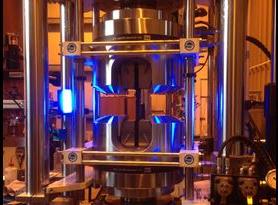FAQ: What is an Engineering Critical Assessment (ECA)?
How can we help you with Engineering Critical Assessment (ECA), and what are the benefits for you? Our experts can help deepen your knowledge about ECA and its benefits by answering some of the most frequently asked questions.
What is an ECA?
An Engineering Critical Assessment (ECA) is part of a Fitness For Service (FFS) philosophy which considers flaws in structures. This enables the significance of flaws to be assessed in terms of structural integrity. A flaw, in this case, is any notch, void, or crack, where we can apply the principles of fracture mechanics and fatigue.
Who can use an ECA?
ECA can be implemented by anyone involved in the design, manufacture, build, and welding to generic codes. Integrity is ensured by testing to demonstrate generic compliance to minimum criteria.
On a statistical probability basis, to achieve minimum properties, a lot of the material supplied is significantly in excess of the minimum required properties which results in layers of unrecognized conservatism that is built into the basic code-compliant design. This can then be utilized moving through construction into operation where targeted ECAs can demonstrate safety and integrity when faced with unintended challenges.
From design to fabrication and operation, an ECA can be used throughout the entire project lifecycle by a range of engineering industries.
Is an ECA performed in accordance with a recognized standard?
There are standards that detail ECA methodology and processes. These are based on fundamental knowledge of fracture mechanics and fatigue and are the subject of internationally recognized standards.
For flaws in structures and especially welded structures, BS 7910 is the reference standard derived from historical work and validated by full-scale testing. API 579 is a more wide-ranging standard that covers many more FFS issues.
API 1104 Annex A and DNVGL-RP-F108 are much more specific to the topic of alternative weld flaw criteria for the manufacture of pipelines. These standards enable bespoke project-specific analyses to be performed to solve clearly identified problems.
Can you give typical examples where ECA can be implemented?
ECA can justify continuing service and remnant life in the event that flaws have been found in a structure. The same principles can be used as part of a failure investigation to understand what has gone wrong, the mechanisms of failure, and more optimistically what we could do better in the future.
Frequent use of ECA is as a Post Weld Heat Treatment (PWHT) Waiver. As per the ASME Boiler Codes for WTs > 1 ¼, approximately 32mm, PWHT is required. However, an ECA can be performed to understand if PWHT will actually provide any benefit e.g. is the structure acceptable without the application of PWHT.
A more in-depth discussion of this example can be found in our Post Weld Heat Treatment (PWHT) case study.
In addition, ECA can be used as part of a lean fitness for a service-based approach to manufacturing in particular as part of the manufacturing process to provide an alternative weld flaw acceptance criteria replacing arbitrary workmanship criteria in welds.
What are the benefits of doing an ECA?
Anywhere there is a flaw we can use the ECA / Fitness For Service (FFS) philosophy to demonstrate the structural integrity and provide justification of continuing service and remnant life in an aging asset.
Additionally, we can use ECA as a more targeted tool to streamline manufacturing on an FFS basis to remove additional processes, such as PWHT and unnecessary repair welding, which will add cost and delay to a project with no overall integrity benefit to the asset.
The Element advantage
Element provides Engineering Critical Assessment (ECA) based on fracture mechanics to allow engineers to demonstrate the safety of a structure or a component and reduce the probability of failure in engineering structures. We combine our advanced materials testing facilities in the US, UK, Europe, and MEAP with our fully integrated ECA services.
As part of this Digital Engineering service Element also includes Finite Element Analysis (FEA), Computational Fluid Dynamics (CFD), and Discrete Element Modelling (DEM), to help you define the most cost-effective inspection and repair plan for all your projects during design, installation, and operation.
Additional questions?
If you have a question that isn’t answered, or if you require more information about Engineering Critical Assessment (ECA) contact an expert today.
Find related Resources
Related Services

Engineering Critical Assessment (ECA) Services
Find out how Element utilizes Engineering Critical Assessment (ECA) services to assess the structural integrity of pipelines to mitigate and prevent failures in the field.

On-demand webinar: How to utilize ECA within the Energy industry
Watch on-demand to learn how Engineering Critical Assessments are used, and their benefits with real-life case studies from around the world.

Can an ECA mitigate the requirement of performing PWHT?
Can an ECA mitigate the requirement of performing Post Weld Heat Treatment (PWHT) and what are the benefits of it? Learn more from Element’s case study.

Modeling and Simulation
We specialize in modeling and simulation to accelerate your research and development initiatives, optimize your designs and support safe, efficient operations.

